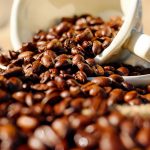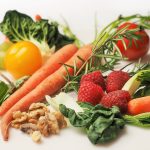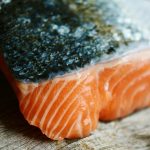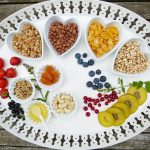Crafting the perfect cup of coffee is an art form, blending precision with a touch of personal flair. Whether you’re a seasoned barista or a homebrew enthusiast, the question of “How much coffee grounds per cup?” is fundamental to achieving that rich, satisfying brew. This guide delves into the science and art behind coffee grounds ratios, ensuring that every cup you pour is nothing short of perfection.
With insights from coffee experts and a deep dive into brewing techniques, we’ll unravel the mysteries of coffee grounds measurement. Our exploration will not only establish our expertise in the coffee-making process but also highlight the importance of getting the ratio just right—for taste, aroma, and the sheer pleasure of the coffee experience. From the impact of grind size to the type of coffee maker you use, every detail matters in the pursuit of the ideal cup.
As you journey through this article, your curiosity will be piqued by the nuances that make coffee brewing a fascinating subject. You’ll discover how slight adjustments can transform your coffee from good to exceptional, and why mastering the perfect coffee grounds-to-water ratio is a skill worth acquiring. Join us as we unlock the secrets to a flawless brew, ensuring that your next cup of coffee is not only made with precision but with a newfound appreciation for the craft.
Understanding Coffee Measurements
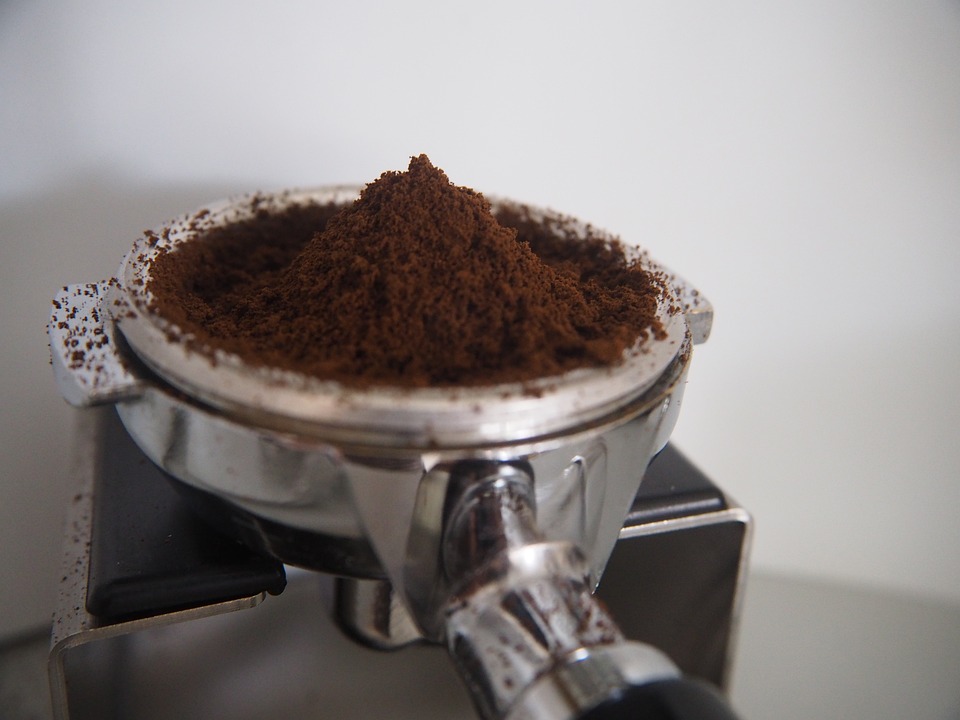
The Basics of Coffee Measurement
The foundation for brewing amazing coffee is understanding optimal coffee-to-water ratios. This “Golden Ratio” provides the blueprint.
The Golden Ratio recommends:
To determine how much coffee grounds to use per cup, the ideal coffee-to-water ratio recommended by the Specialty Coffee Association is around 55 grams of coffee per liter of water (55g/L). For a standard 12-cup coffee maker, this translates to between 5-6 ounces of brewed coffee per cup. A general guideline is to use about 1 scoop (2 tablespoons) of coffee per 7-8 ounces of water for a good coffee ratio. Additionally, for a 12-cup coffee maker, you would typically use 12 scoops or 24 tablespoons of coffee grounds[1]. Adjustments can be made based on personal preference for stronger or weaker coffee by using more or fewer scoops accordingly. Eyeballing the amount of coffee grounds can also be done, with a recommendation of about 1.5-2 tablespoons of coffee per cup for a standard coffee machine. Remember, the key is to find the right balance that suits your taste preferences when brewing your perfect cup of coffee.
This ratio results in a balanced, flavorful cup. Deviate too far from the ideal range and you risk weak or overpowering coffee.
How Cup Size Affects Coffee Strength and Flavor
Brewing into different cup sizes like small, medium, or large? You’ll need to adjust the Golden Ratio.
For example, a “small” 12 oz cup calls for:
- 15g coffee
- 205g water
Compare this to a “large” 20 oz cup:
- 30g coffee
- 340g water
Use markdown table syntax:
| Cup Size | Coffee | Water |
| Small (12oz) | 15g | 205g |
| Large (20oz) | 30g | 340g |
Adjusting the ratio for cup size results in a consistent flavor across any brew size.
Advanced Coffee Measurement Tools
While you can brew great coffee with simple kitchen scales and tablespoons, specialized tools offer convenience and precision.
Digital Scales, Measuring Spoons, and Apps for Precision
Investing in the following equips any brewer for success:
- Digital gram scale – Measures coffee and water to the gram
- Adjustable portable brew scale – Built-in timers and pre-programmed ratios
- Coffee measurement apps – Guides you with built-in brewing calculators
These tools take the guesswork out of measurements. With them, you’ll nail the right amounts every time.
Brewing Methods Explored
Now, let’s break down the ideal measurements and special considerations for various popular brewing devices.
Drip Coffee
Most automatic drip coffee makers are designed for the “Golden Ratio” of 55g coffee per 1 liter of water.
However, check your machine’s manual as some specify otherwise.
For optimal flavor, grind to a medium consistency. Make sure to clean the machine regularly too.
French Press
Due to the immersion brewing method, French Press requires a slightly coarser grind and lower coffee-to-water ratio than drip.
Target 1g of coffee for every 15g of water. For a 4 cup press, use:
- 28g of coffee
- 400g of water
Lower temperatures around 200°F help extract sweeter flavors.
Espresso
Espresso brewing depends on the “Golden Espresso Ratio” of a 1:2 brew ratio.
This yields approximately:
- 15g ground coffee
- 30g extracted espresso
Getting the timing right is also crucial – aim for an extraction time of 25-35 seconds.
Cold Brew
Unlike other methods, cold brew utilizes a higher coffee-to-water ratio for increased strength.
The ideal proportions are:
- 1 cup ground coffee
- 4 cups water
This produces a concentrate. For drinking, dilute concentrate 2:1 with water or milk.
AeroPress
The AeroPress requires a fine grind and shorter steep than other manual brewing.
With the inverted method, use:
- 15g coffee
- 75g water
Steep for one minute before pressing. Add 150g water to dilute.
Siphon Coffee
Given the hybrid immersion-percolation process, siphon brewing calls for medium-fine ground coffee at a lower temperature.
Use 45g of coffee per 300g of 195-205°F water. Adjust grind and time to taste.
The Crucial Role of Water
Water is one of the most underrated factors for coffee excellence. Optimizing its quality and temperature makes a big difference.
Water Quality and Coffee Taste
High mineral content in tap water can impart unpleasant flavors. Most experts recommend using filtered or bottled water whenever possible.
You’ll immediately notice the cleaner, sweeter taste in your morning cup.
Optimal Water Temperature
Water too hot will scorch the beans, while too cold fails to properly extract flavors.
Use the following temperature guidelines:
- Drip coffee – 205°F
- French press – 200-205°F
- Espresso – 195-205°F
- Cold brew – Room temperature
Coffee Storage and Freshness
Proper storage preserves beans’ aromatic oils and locks in flavor.
Storing Coffee for Maximum Freshness
Follow these storage tips:
- Keep beans or grounds in an airtight container in a cool, dark place
- Avoid moisture or exposure to light/air
- Freeze for long-term storage
With the right storage, beans stay fresher longer.
The Effect of Bean Age on Measurements
As coffee beans age and stale, they extract less efficiently. Adjust your coffee-to-water ratios accordingly:
- 0-7 days after roasting – No need to adjust ratio
- 2-4 weeks after roasting – Add 2-4g more coffee per cup
- 1-3 months after roasting – Add 6-8g more coffee per cup
Don’t waste good beans – dial in the measurements to account for freshness.
Ethical and Sustainable Brewing
Making the perfect cup and supporting growers go hand-in-hand. Prioritize ethical and eco-friendly practices.
Choosing Sustainably Sourced Coffee
Seeking out responsibly sourced beans helps the environment and farming communities.
When possible, buy:
- Organic
- Shade-grown
- Fair Trade Certified
- Locally roasted
Supporting Fair Trade Practices
Fair Trade improves farmers’ livelihoods by ensuring fair wages and prices. For great coffee that gives back, look for the Fair Trade label when purchasing beans. Supporting ethical production matters.
Exploring Coffee Origins and Taste Profiles
The country, region, and processing method shape the flavor of beans. Tweak your method to highlight different coffees’ unique characteristics.
Single-Origin vs. Blend Measurements
The diverse taste notes in blends mesh well with standard ratios. Single-origin beans perform best with slightly customized measurements.
Entity: Coffee origin
Attribute: Affects
Value: Optimal brewing method
For a balanced cup, stick near the Golden Ratio for blends and adjust as needed for single-origin.
Regional Flavor Profiles
Coffees from different parts of the world have distinct flavor profiles – your measurements can maximize these:
- Central/South America – Sweeter, lower acidity; lower temp enhances
- Africa – Intense fruit and floral; steep longer to extract
- Indonesia – Earthy, savory spice; higher ratio highlights
Technological Aids for Brewing
Specialized gadgets and apps put coffee insights and recipes in the palm of your hand.
Apps and Gadgets for the Perfect Brew
Digital tools provide guidance for hitting the right ratios and optimizing different methods.
Top solutions include:
- Brew timers
- Digital refractometers
- Connected smart scales
- Coffee brewing apps with databases
Tech removes the guesswork so you can focus on enjoying the ritural.
Health Considerations in Coffee Brewing
Measurements directly impact caffeine intake. Those avoiding caffeine for health reasons need to pay special attention.
Caffeine Content Management
The amount of coffee used directly increases caffeine content. To control intake:
- Use less coffee grounds
- Try decaf varieties
- Dilute brew concentrate with more water
With the right ratios, you can enjoy coffee’s flavor without excess caffeine.
Decaf Brewing Tips
Decaf beans often benefit from slight adjustments:
- Use medium-fine grind for fuller body
- Increase coffee amount by 25%
- Decrease water temp by 5°F
Follow those tips and decaf drinkers will never feel like they’re missing out.
Enhancing Your Brewing Experience
Additional resources exist to further refine your coffee mastery. Dive deeper through engaging media.
Interactive Brewing Guides
Nothing improves technique like seeing the steps in action. Interactive tutorials provide that.
The best feature:
- Step-by-step videos
- Detailed infographics
- Customizable parameters
- Brew-along sessions
Visual learning sticks – use multimedia to fully grasp the nuances.
Expert Recipes and Barista Tips
Another perk of the information age – coffee wisdom from seasoned pros is abundantly available.
Seeking out recipes and advice from experts through:
- Books
- Blogs
- YouTube tutorials
- Online classes
…is a smart way to keep honing your craft.
Conclusion
We’ve covered all the core principles, tools, methods, and considerations involved in coffee measurement mastery. Now it’s time to enjoy the fruits of your knowledge by brewing your new perfect cup. Experiment freely, taste thoughtfully, and may your future cups be as fulfilling as the journey behind them. Keep learning and, above all, appreciate the simple joy of a good brew.
Susan Muskat is a professional chef with over 25 years of experience in the culinary industry. After working in some of the most prestigious restaurants in the world, she opened her own restaurant, Moose and Sadie’s, which quickly became a local favorite. Susan is also the author of a blog all about recipes, guidelines, cooking tips, and knowledge from professional chefs. She loves nothing more than sharing her passion for food with others.



